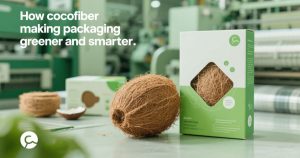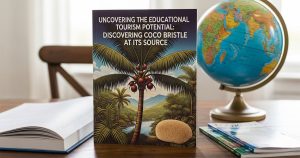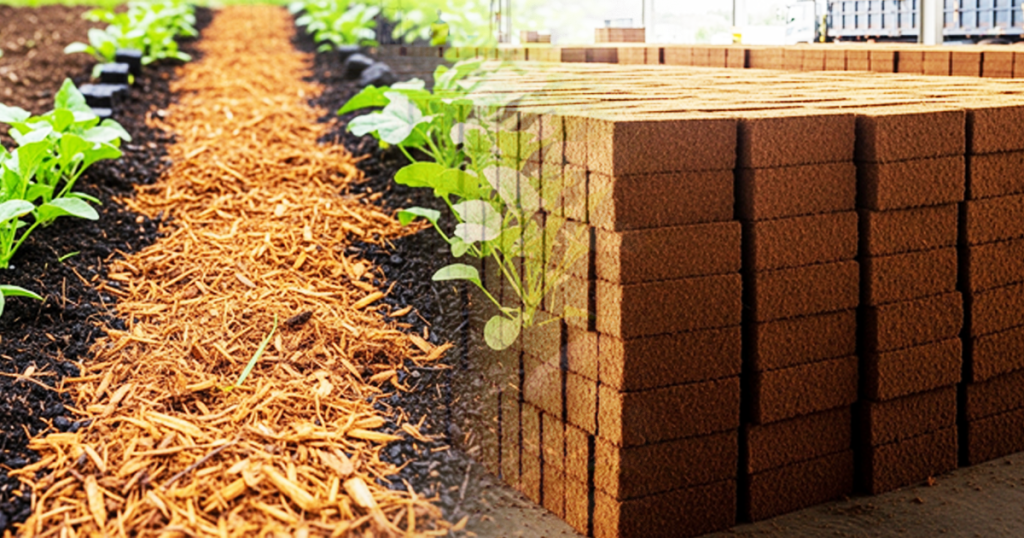Coco Peat: A Sustainable Byproduct with Global Potential
Once considered agricultural waste, coco peat the fibrous dust derived from coconut husk processing has transformed into what the industry now calls “green gold.” As a researcher immersed in the study of this versatile substrate.
I have observed a significant shift in how the global market perceives and values coco peat. Formerly discarded or burned, this organic material is now in high demand across the horticultural and environmental sectors, driven by sustainable development goals and the need for eco-friendly alternatives.
Export data from countries such as India, Sri Lanka, Indonesia, and the Philippines reflect this surge. These tropical nations, rich in coconut production, are capitalizing on a new export commodity that requires minimal processing yet delivers high international value.
The global market for coco peat particularly in the European Union, United States, and Middle East continues to grow at double-digit rates annually.
Drivers Behind the Global Demand Surge
The surge in coco peat’s international trade is not a mere market trend; it is a response to environmental concerns, soil degradation, and the need for renewable substrates. Traditional soil conditioners like peat moss have faced criticism for their environmental toll, especially on wetland ecosystems.
In contrast, coco peat is renewable, biodegradable, and often produced as a byproduct, making it a responsible choice. From a research standpoint, coco peat’s properties make it exceptionally suitable for hydroponics and soilless agriculture.
Its high water retention, aeration capability, and pathogen resistance provide a stable and clean environment for plant growth. These qualities have made it a cornerstone in modern urban farming, greenhouse cultivation, and large-scale horticultural production.
For example, hydroponic systems in the Netherlands, vertical farms in Japan, and cannabis cultivation facilities in Canada now rely heavily on premium-grade coco peat. The growing acceptance in regulated industries further elevates its commercial reputation.
Indonesia’s Strategic Position in the Export Landscape
Among major producers, Indonesia is positioning itself as a key global player in coco peat exports. The country benefits from abundant coconut plantations and a rising number of SMEs entering the coco peat processing industry.
Based on recent trade figures, Indonesia has exported thousands of metric tons annually to more than 50 countries. However, challenges persist. One of the most significant hurdles is quality control.
Variability in pH, EC (electrical conductivity), and particle size affects buyer confidence. To counter this, standardization protocols and certification systems are being implemented at both government and private sector levels.
My research has involved assisting cooperatives in implementing post-processing techniques to reduce salt content and increase fiber uniformity essential criteria for high-value markets.
There’s also increasing interest from Indonesian startups to integrate coco peat processing with digital traceability platforms, ensuring that buyers can track sustainability certifications and supply chain transparency a trend increasingly demanded by EU importers.
From Local Waste to Global Resource
It is important to underline how the rise of coco peat in international trade has socio-economic impacts as well. In rural coconut-growing regions, especially in Eastern Indonesia, the coco peat industry is offering new employment opportunities.
Women-led cooperatives and youth enterprises are flourishing, producing export-quality coco peat blocks, grow bags, and even innovative coco peat-based bioplastics.
Furthermore, international investors and NGOs are starting to fund infrastructure improvements, including drying facilities and quality testing laboratories. These investments are key to elevating small-scale producers to global standards.
As a researcher, I see a growing synergy between scientific development, policy alignment, and grassroots entrepreneurship that can set the stage for long-term sustainability.
Scaling Up While Staying Green
Despite its promise, the coco peat industry must tread carefully. Large-scale expansion must not compromise environmental integrity. Over-harvesting coconut husks without ensuring tree regeneration or community benefit could reverse the industry’s green image. Regulation, capacity building, and investment in circular processing systems will be essential.
Research and innovation remain central. Exploring ways to enhance the nutrient profile of coco peat, integrating it with biochar, or using it for carbon sequestration could widen its applicability beyond agriculture.
As global markets continue to favor sustainable inputs, coco peat is poised to become a permanent fixture in international trade. For tropical nations, it offers not just export revenue but a path toward responsible development a genuine case where local innovation meets global need.







